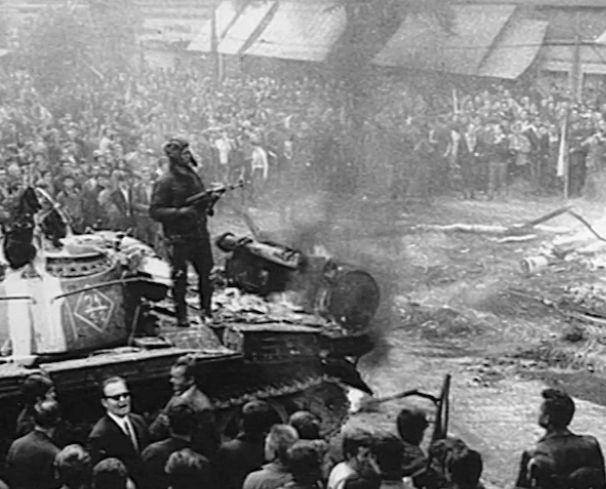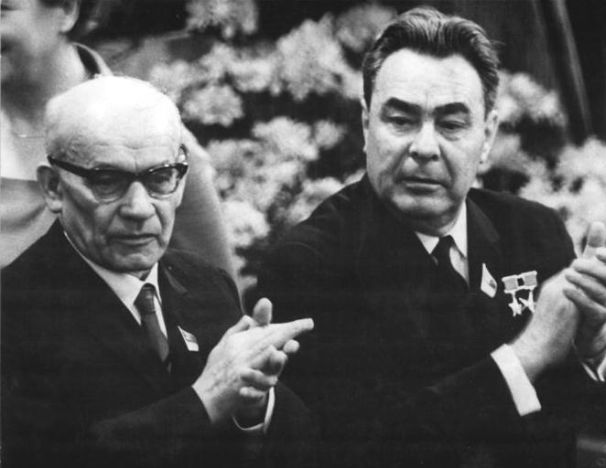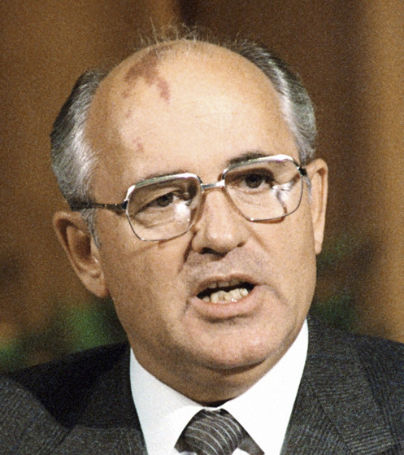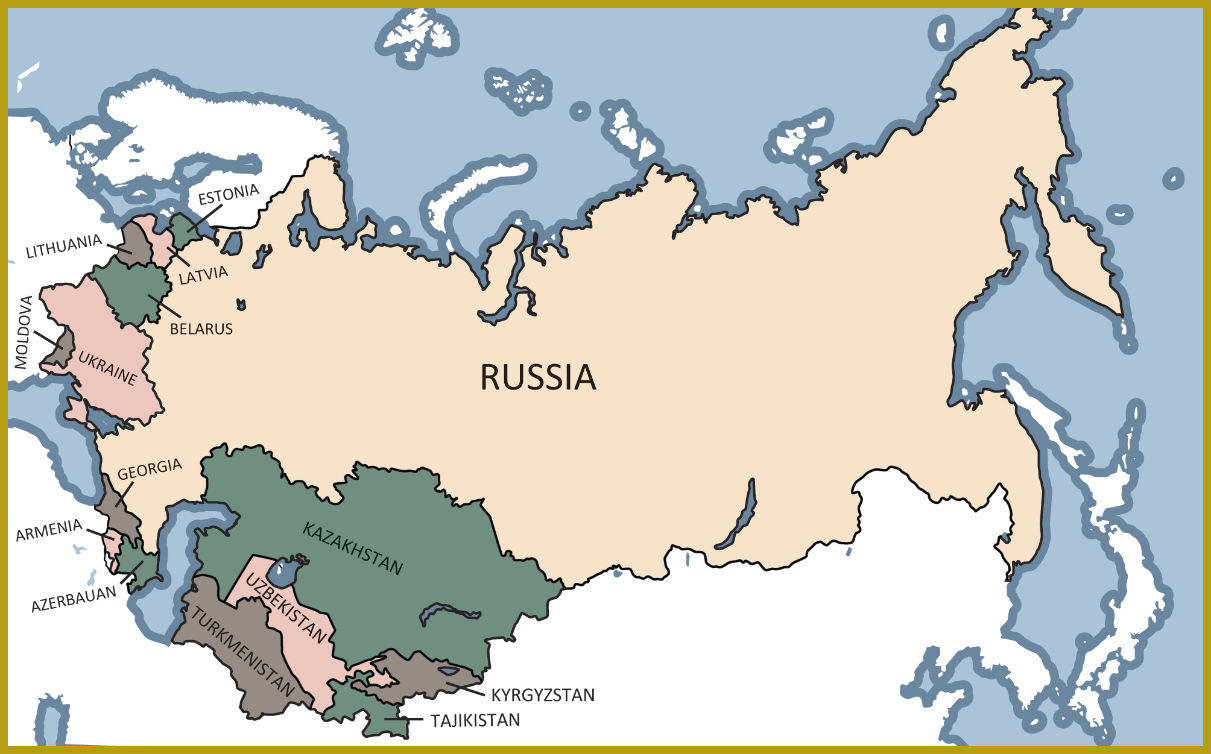a) De-stalinization and its limits
After the death of Stalin in 1953, his successor Nikita Khruschev denounced the dictatorial methods of the former leader within the 20th Congress of the Communist Party in 1956. With his speech, Khruschev began a de-Stalinization period, which meant the liberation of thousands of political prisoners and a new direction in the government of the country. Although the 5 Years Plans continued, the production of consumer goods was encouraged in order to improve general standard of living. The government also allowed certain peasant private initiatives in order to boost agricultural production.
Concerning foreign affairs, the Soviet leadership offered a new period of co-existence to the USA and the Western Block. It seemed also that the development of different patterns of socialism were to be tolerated in its European satellites.
Hungary. Nevertheless, Soviet flexibility had limits, above all related to the preservation of the communist rule and the Soviet control of the foreign and military affairs of the Eastern European countries. Encouraged by the new political direction of Moscow, in Hungary the communist leader Imre Nagy moved towards the democratization of the country, announced the Hungarian withdrawal from the Warsaw Pact, and declared its neutrality in 1956. As a response, Soviet troops occupied Budapest, executed Nagy and installed a new pro-Soviet government.

areena.yle.fi
The Prague Spring. In Czechoslovakia, also the communist Alexander Dubcek tried to lead a democratic movement, the Prague Spring. In 1968 he showed democratic intentions: the government would remain communist, but it would be responsible before the people (the "democratic socialist revolution"). Besides, a programme of economic de-centralization was implemented ("socialism with a human face"), and also a number of individual rights (such as freedom of speech) were allowed. Nevertheless, troops of the Warsaw Pact put an end to this movement, because it implied a serious risk for the continuity of the communist rule and the control of the USSR. The so-called Brezhnev doctrine established the right to intervene in a communist country when socialist principles were threatened.
b) Brezhnev
After the retirement of Khrushev in 1964, L. Brezhnev had emerged as the leader of USSR in the 70s. Brezhnev insisted on the old communist methods, such as the political monopole of the communist party, and the State complete control of the economy. As a matter of fact, his government was based on the support of the bureaucracy of the Communist Party, whose members enjoyed economic and social privileges (better housing, consumption goods) unattainable by ordinary people. On the other hand, due to the lack of necessary reforms and the increasing military spending, the Soviet economy entered a period of stagnation. The Soviet standard of living began to decline, and the end of the Communist period witnessed a lack of basic consumer goods and even food shortages. Queues to get basic products were common at the time. On the other hand, the Soviet invasion of Afghanistan in 1979 was the beginning of a long war that ended in a clamorous failure for the USSR -a Soviet Vietnam.

Wikimedia Commons
c) Gorbachev and the end of the USSR
The USSR was not able to revitalize its stagnant socio-economic system and to cope with the renewed impetus of the USA. In 1985 Mikhail Gorbachev became secretary general of the Communist party, and launched a program of political and economic reform (perestroika or restructuring), and openness (glasnost). Glasnost was aimed to promote public discussions and criticism within the Soviet society. Political dissidents were released, and bureaucratic corruption began to be denounced by a more transparent media. In 1987 the government announced democratic elections for local soviets; although the Communist Party still controlled the country, the path to democracy was open.

Wikimedia Commons
The objectives of perestroika were to decentralize the economy and to introduce free market elements. State planning was reduced, and small private enterprises were tolerated. With respect to the cold war, Gorbachev tried to stabilize the arms expenditure and to begin a new period of relaxation of tensions with the West. Nevertheless, political openness paved the way for the materialization of nationalist pressures from the different federated republics, above all in the Baltic and the Caucasus.
Gorbachev's reforms were too slow and did not respond to the demands of people. Economic reforms were not enough to reverse the socioeconomic critical trend of the USSR. A quarter of the Soviet population was living below in conditions of poverty. Besides, Gorbachev tried to keep unchanged the political monopole of the CPSU, although certain personalities had begun to design new political directions. The elected president of the Russian Federation, Boris Yeltsin, resigned from the Communist Party in July 1990. Actually, Gorbachev received pressures from both the conservative sector of the CPSU and those in favour of more radical changes.
In August, a group of members of the Party staged a coup d'État, arrested Gorbachev and tried to come back to the old Soviet regime. The coup failed thanks to the resistance offered by Yeltsin. In September 1991, the Congress dissolved the USSR and the different Soviet Republics declared their independence.

d) Central and Eastern Europe
At the same time, popular movements led to the fall of the communist governments in Eastern Europe. In 1989 thousands of East Germans went to the West via Hungary and Czechoslovakia, and at the end of the year the borders were open. On 9 November 1989 border controls in Berlin were abandoned, and the Wall began to dismantle. Germany was finally reunified in 1990. In Poland, the government accepted free elections, and Solidarity (a clandestine catholic trade union) became the largest Polish political force. In Czechoslovakia the Velvet revolution overthrew the communist government in 1989 (a process that ended in the division of the country into two States, the Czech Republic and Slovakia in 1993). Afterwards, free elections took place also in Hungary and Bulgaria.
